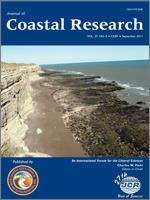Uniola paniculata C. Linnaeus is a New World, tropical-, subtropical-, and temperate-zone, rhizomatous grass that is often a dominant species on foredunes and on the primary dune complex. Uniola paniculata L. has low freshwater-moisture requirements, tolerates aerosol salt spray, has low nutrient level requirements, tolerates high sand temperatures, and provides extensive sand coverage. Also known as sea oats, this grass inhabits mobile and semistable dune systems and plays a significant role in trapping sand and building primary dunes. Caryopsis production is low. However, germination is enhanced by cutting into the endosperm and leaching the caryopses. Northern populations require cold treatment before germination, but southern populations are not dependent on cold treatment before exposure to a germination protocol with a 35/25°C thermoperiod.
How to translate text using browser tools
1 September 2011
Biological Flora of Coastal Dunes and Wetlands: Uniola paniculata L
Robert I. Lonard,
Frank W. Judd,
Richard Stalter
ACCESS THE FULL ARTICLE

Journal of Coastal Research
Vol. 27 • No. 5
September 2011
Vol. 27 • No. 5
September 2011
communities
economic importance
geomorphological interactions
germination ecology
habitats
morphology
population ecology




